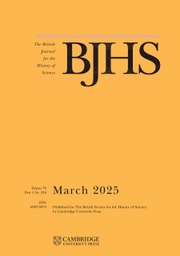On a wall of my home, I have a map of Iowa from 1854. The entire map is covered in a grid, with about a half-dozen different symbols indicating the status of each tiny square: surveyed, platted, field notes recorded and transcribed, under process of survey, and so on. In the upper north-west corner of the state, the grid is empty of symbols, yet the outcome feels inevitable: at some point in the near future, the map seems to declare, the furthest extent of Iowa will, too, be surveyed, platted and so on. Looking at a map of Iowa’s county boundaries today, the grid is still there, although not nearly as perfect as the vision from 1854. Tama, Benton and Linn counties poke up higher than their neatly lined-up neighbours to the west. The line of counties starting with Woodbury and moving east have small notches in their north-east and north-west corners. Iowa’s county boundaries were clearly governed by an imaginary grid, but today’s map shows the concessions and deviations in the transition from idealized form to reality. Growing up in Iowa, I never had any reason to question why Iowa’s counties were laid out in this way, although when quizzed on the names of all ninety-nine in school, I certainly wished that there were fewer of them. Amir Alexander’s wonderful Liberty’s Grid offers up the explanation for why Iowa – and, indeed, most of the United States – is laid out on this unrelenting pattern. The inevitability communicated on the 1854 map was, Alexander argues effectively, part of a larger ideological project, which by that point had been in place for decades.
In tracing this project, Alexander skilfully and patiently directs the reader through a ‘mathematical prologue’, which lays out different conceptions of space from Aristotle to Descartes to Newton. Descartes gave us the coordinate system – with its familiar x and y axes – but Newton’s concept of ‘absolute geometrical space’, separate from physical reality, meant that these axes could extend indefinitely. This Newtonian vision, Alexander argues, had a profound impact on Thomas Jefferson, who seized upon it as his concept for America: ‘America was for him an empty, uniform, limitless, space – a blank slate on which enterprising settlers could employ their industry, write their own story, and create a new nation like no other’ (p. 85). Jefferson looked west and saw both promise and opportunity for independent yeomen farmers. This vision was aided by Jefferson’s interest in mathematics, which had implications beyond geography; he successfully advocated for the United States to have the first decimal currency in the world, for example. Jefferson advocated for a plan to survey western lands, which was approved by Congress in modified form after he had departed to become the US envoy in Paris. But despite modifications, the 1785 plan included Jefferson’s core idea of the grid, meaning that the West would be divided into ‘precise, regular, and uniform one-mile squares, oriented to the points of the compass’ (p. 124). Surveying would not be tied to local geographical features or land grants from a monarch, but to a regular and ordered grid equally applied across the entire landmass. This was a shift in determining how land was organized, with repercussions reverberating to the present day.
The land to be surveyed was not, of course, empty Newtonian space; it contained both people and geographical features. Alexander argues that Jefferson’s vision of the grid eased the process of conquering the land because the grid ‘carried with it a vision of the West as an empty open land awaiting its settlers’ (p. 126). The grid helped people conquer the West in their minds before ever setting foot in the region by applying a rational order to unknown space. The Cartesian coordinates extended unimpeded all the way to the Pacific Ocean. Jefferson further legitimized this work by viewing Native Americans as a ‘dying race whose demise was assured’; thus he could argue that their land was essentially empty (p. 80). Eventually, Native peoples would be expelled to lands further west, their new homes defined by the very grids that helped justify their removal in the minds of white settlers. Grids make no allowance for existing people or geographical reality. How many times must nineteenth-century surveyors have cursed the grid as they waded through rivers or lost their footing on scree, all to force a mathematical vision on an irregular landscape?
In the closing chapters of the book, Alexander turns his attention from the West to eastern cities. Pierre L’Enfant’s layout for Washington, DC, with its circles and angled lines, stands in contrast to Jefferson’s gridded vision for space. (Jefferson had his own design for the new capital, but L’Enfant’s vision won out.) In New York, the decision to expand the city on the basis of a grid was an expression of ‘a blank slate on which its citizens will pursue their own goals unhindered’ (p. 247). Whether looking to the rural West or expanding the urban East, Americans usually turned to the grid to organize space. L’Enfant stands here as the exception.
Alexander’s book exemplifies what historians are best positioned to do: peel back our assumptions and reveal that things did not have to turn out exactly the way they did. Alexander forces us to see the familiar as new, and to understand why the course Jefferson advocated was so compelling at the time. The book is at its most effective in the earlier chapters, carefully explaining the mathematical principles at stake and then demonstrating how ideas about space and geometry were ideological decisions, not just conveniences for surveyors. We see the consequences of Jefferson’s vision all around us in city streets, rural roads, county boundaries and state lines. By uncovering the intellectual roots of what seems like a ‘natural’ part of reality, Alexander has done an immense service, and this book can be read with profit by anyone studying early American history.



